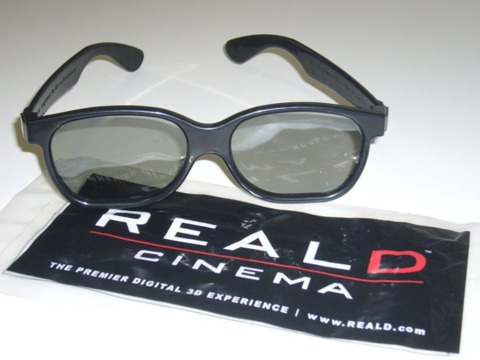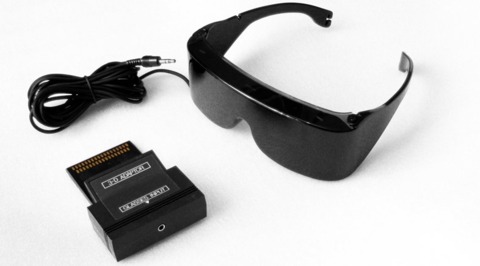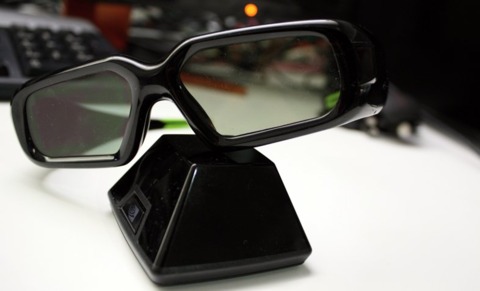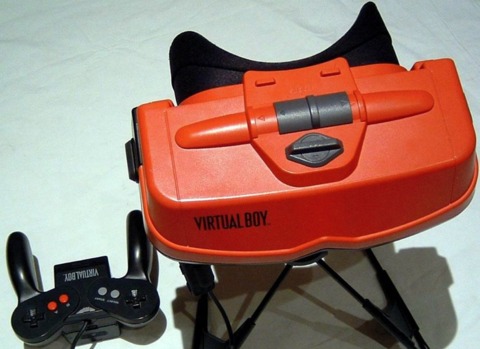GameSpot's Guide to 3D Gaming
We take a look at how 3D gaming works and which platforms support it.
With the release of James Cameron's Oscar-winning Avatar in 2009, 3D got a major shot in the arm. Though 3D technology has been used in cinemas since the 1950s, it has largely been relegated to B-movie horror flicks or, more recently, special screenings at the IMAX. Even gaming has previously flirted with 3D, with Sega's shutter glasses-powered SegaScope system on the 8-bit Master System and Nintendo's red-screened Virtual Boy.
Now, post-Avatar, a strings of films, including Alice in Wonderland, Toy Story 3, and How to Train Your Dragon have all been released in 3D, with many more due to roll out of Hollywood later this year. Video games are also embracing 3D in a big way; Sony's PlayStation 3 now has the ability to play 3D games, with titles such as Wipeout HD, Killzone 3, and Little Big Planet 2 all featuring support for 3D. Nintendo unveiled its 3DS to a stunned Electronic Entertainment Expo audience this year, promising to give gamers glasses-free 3D on the go. And, of course, there is the humble PC, which is able to play most games in 3D with Nvidia's 3D Vision kit.
So, just how can you get yourself set up for 3D in the home? This guide will tell you everything you need to know about 3D; how it works, what equipment you need, what games are available, and how well it works.
The Science
There are three main types of 3D technology currently in use across TV, cinema, and gaming: polarised, LCD shutter, and parallax barrier. To understand how each technology works, first, we have to look at how exactly our brains generate a 3D image. Our ability to see in three dimensions is based on the fact that we have two eyes, placed next to each other, which is known as binocular vision. This allows us to not only see the length, width, and height of an object, but it also lets us perceive the depth and distance of it.
Because each of our eyes is in a slightly different position, each eye has a different perspective on whatever it perceives. If you close one eye at a time, you can look at the individual images that your eyes see and notice how objects appear differently in both. This difference is known as vertical shift. The closer an object is, the bigger the vertical shift. What our brain does is analyse the two images, and via a process known as stereopsis, combines them to form a single picture. The difference in shift between the images allows us to judge the depth and distance of an object.
The various 3D technologies fool the brain into giving an object depth by sending two slightly different images to each eye, replicating the vertical shift that happens in the real world. Films and TV shows use cameras with two lenses to capture those images, while 3D animated films and games can simply move the virtual camera perspective to render them. What differs between each of the different 3D technologies is how the two images are sent to your eyes.
The Tech
The most common form of 3D is polarization. It’s often used in cinemas or at events where many people are watching at once. It works by filtering light into one of two circular polarization states, known as left-handed and right-handed. The light can then pass through a polarizing filter with the same state, but it will be blocked by one with an opposing state. This means that by wearing glasses with a corresponding filter on each lens, a different video signal can be sent to each eye from a pair of projectors. Polarization is ideal for cinemas, as the glasses are cheap and easy to produce, but there is some loss of light through the filters and lenses resulting in a dimmer picture.
While polarization is taking on 3D duties on the silver screen, home users are most likely to be viewing their 3D media with LCD shutter glasses. They work by taking advantage of the high refresh rates (120Hz or above) that current display technologies are capable of, such as plasma and LCD. This high frame rate allows the TV to send out two separate high-definition pictures at 60Hz each, alternating between each frame sequentially. The glasses are linked up to the TV wirelessly, and in synchronization with the refresh rate of the screen, they open and close their lenses in rapid succession. This means each eye only sees the frame it’s supposed to, creating a 3D image. The technology has many advantages, including reduced ghosting, zero reduction of the colour spectrum, and improved viewing angles. Shutter glasses have actually been used in gaming for some time, with Sega's SegaScope 3D system making its debut on the 8-bit Master System back in the '80s.
The third technology soon to be making its mass-market debut in Nintendo's 3DS is known as autostereoscopic parallax barrier, which allows you to view 3D without the need for glasses. It works by adding a special filter to an LCD screen, which enables it to direct light to each eye individually via a series of precision slits. Your brain then pieces the two images together and, presto, glasses-free 3D. However, there are some issues with the technology, the biggest of which is the limited viewing angle. Unless you’re looking at the screen from a certain sweet spot, the 3D effect simply doesn’t work. The screen also requires double the number of horizontal pixels it would normally use, which in the case of the 3DS means its 800x240 pixel display actually only delivers 400 pixels of resolution in practice.
PlayStation 3
Sony flipped the switch on its 3.30 firmware for the PlayStation 3 back in April, which gave the console the ability to play 3D games. To take advantage of 3D, you need a compatible TV. At the moment, they are more expensive than their 2D counterparts and not all come supplied with LCD shutter glasses, which cost about £100. If you’re running your video through an A/V switch or amplifier, you also need to make sure it's HDMI 1.4 compatible; otherwise, it won’t work.
Currently, there are four 3D titles available to download from the PlayStation Store, which come bundled in a pack priced at £23.99: Wipeout HD, Super Stardust HD, PAIN, and a single level demo of Motorstorm: Pacific Rift. Each has differing levels of 3D effects, with varying amounts of depth of field and objects flying out of the screen. Wipeout HD is the most impressive of the bunch, with its bright neon art style and long draw distances lending themselves well to 3D. The majority of the effect is kept to increasing the perceived depth, allowing you to see the racetrack stretching off into the distance. This not only lets you more accurately anticipate upcoming corners, but also adds to the feeling of speed as you race along the tracks. A similar effect is applied to Motorstorm: Pacific Rift, albeit with much more debris flying into your face. Super Stardust HD works slightly differently. This time, 3D is used to create clearly defined layers, with the planet on the bottom, the ship in the middle, and debris from asteroids on top.
Many upcoming games will also have 3D support, including shooter Killzone 3, Gran Turismo 5, and upcoming Move title The Fight. Third parties are also getting in on the action, with Ubisoft’s Shaun White Skateboarding being one of the first to take advantage of 3D, complete with increased depth and a visually enhanced flow system. A further update to the PlayStation 3 will also allow it to play 3D Blu-ray movies and is due later this year.
PC
Nvidia unveiled its 3D Vision technology back at the 2009 Consumer Electronics Show in Las Vegas. It remains the only option for viewing 3D content on a PC, as well as one of the cheapest ways to play games in 3D, depending on what hardware you currently run. To get started, you need at least a Core 2 Duo or Athlon X2 processor and a GeForce 8 Series or higher video card; you'll also need to be running Windows Vista or 7. You need a 3D vision compatible projector or display as well, such as the Acer Aspire GD245HQ, which has the required 120Hz refresh rate. Finally, you need one of Nvidia's £120 ($190) 3D vision kits, which contain active shutter glasses and a USB transmitter to sync them.
Setting up the kit is as simple as installing the drivers and plugging in the transmitter. Unlike the PlayStation 3, many existing games work in 3D without being specifically designed for it. A full list of these can be found over on Nvidia's Web site. We tried out the system with a number of games, including Portal and Starcraft II. Portal’s compatibility is rated as “excellent,” and we found it worked extremely well. The added depth made solving the spatial puzzles more enjoyable and the whole game much more immersive. Starcraft II works similarly well, with added depth to the playing field and explosions flying from the screen. Games such as Batman: Arkham Asylum and Just Cause 2 benefit from being designed specifically for 3D Vision. There isn’t a huge amount of difference between them and titles not designed for the system, though you may notice the 3D effect being less prominent in the latter.
3DS
Unveiled at this year’s Electronic Entertainment Expo, the 3DS has won the hearts of the gaming press, winning the Best of Show award from a collection of the industry’s top critics. Unlike all other forms of 3D, you don’t need special glasses to play; all you need is the device itself. Physically, it looks much like its predecessors the DS Lite and DSi, with the same clamshell design. However, there are numerous improvements inside, including the wider top screen, increased resolution for both screens, dual cameras for taking 3D photos, an analog stick, and a beefier graphics system to push all the extra pixels. There’s also a 3D slider, allowing you to adjust the level of the 3D effect in games.

Nintendo announced a slew of games at E3; many will bring some of the most loved video game characters of all time to life in 3D. First-party games include Animal Crossing, Kid Icarus: Uprising, Mario Kart, Nintendogs + Cats, Paper Mario, Pilotwings Resort, Star Fox 64 3D, and Steel Diver. There was also a massive amount of third-party support on show from all the major publishers, including games such as DJ Hero 3D, Resident Evil: Revelations, Super Street Fighter IV 3D, FIFA, Metal Gear Solid Snake Eater 3D, Professor Layton and the Mask of Miracle, Assassin's Creed: Lost Legacy, Dead or Alive, and a Final Fantasy 3DS project.
Of course, the question on everyone’s lips is: Does it work? Amazingly, it does work. Though it takes a few seconds for your eyes to adjust, the 3D effect is very convincing. Objects pop off the screen, and there is an increased sense of depth, with multiple layers visible. The effect is used differently across the available games, with some working better than others. In Nintendogs, for example, your virtual pet’s paws and nose seem to pop right out of the screen, with toys such as the Frisbee and ball sitting above the background. However, in Kid Icarus: Uprising, the effect adds depth to the playing field, allowing you to see into the screen and judge the distance of objects at which to shoot. The 3D slider can be used to adjust the effect, so it can be tuned to your own vision or turned off altogether.
Despite the influx of 3D gaming devices and the huge success of films, such as Avatar, there are still concerns that the technology will ultimately flop, much like it has in the past. Cost is still a prohibitive factor, particularly for Sony’s PlayStation 3 setup, which requires a specific TV. However, Sony itself believes that games may be the “killer content” for 3D, pushing consumers to pick up new sets.
While cost may be an issue for some, others may be discouraged by medical issues. Around 6 million Britons suffer from poor binocular vision according to UK charity The Eyecare Trust, making it difficult for them to see 3D effects. Eye experts in the US are recommending viewers get their eyes checked before watching 3D, as even minor eye problems can cause headaches over prolonged sessions. In fact, both Sony and Nintendo have issued guidelines recommending viewers take regular breaks while viewing a 3D display and to supervise children under 6 years of age. Sony also warns of potential side effects, including eye strain, eye fatigue, and nausea.
At the cinema, there are already signs that the 3D bubble may be about to burst. Recent statistics have shown that box office takings for 3D movies have steadily decreased over the past few months, with more opting to see the film in 2D, with its cheaper ticket price. However, unlike the many failed attempts at pushing 3D to the home and cinema in the past, the huge improvements in technology are undeniable, creating a much more compelling viewer experience. And with the film industry, TV manufacturers, Nintendo, Sony, and Nvidia banking on its success, there may be enough weight behind 3D to convince us all it's worth splashing out on.
Got a news tip or want to contact us directly? Email news@gamespot.com






Join the conversation